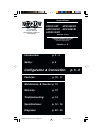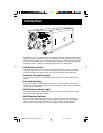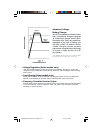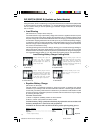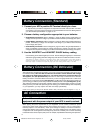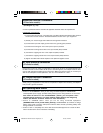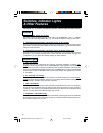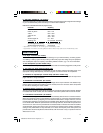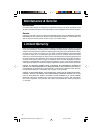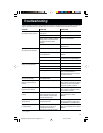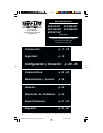
8
Battery Connection (Standard)
1. Connect your APS's positive DC Terminal directly to a fuse.
UL requires that you install a recognized UL component fuse block and fuse within 18 inches
of the battery. The fuse's rating must equal or exceed the Minimum DC Fuse Rating listed in
your APS model's specifications on pages 14-15.
2. Choose a battery configuration appropriate to your batteries.
• Single Battery Connection: Refer to Diagram 4, page 34. When using a single battery, its
voltage must be equal to the voltage of your APS's Inverter Nominal Input Voltage (see specs).
• Parallel Battery Connection: Refer to Diagram 5, page 34. When using multiple batteries in
parallel, each battery's voltage must be equal to the voltage of your APS's Inverter Nominal
Input Voltage (see specs).
• Series Battery Connection: Refer to Diagram 6, page 34. When using multiple batteries in
series, all batteries must be equal in voltage and amp hour capacity, and the sum of their
voltages must be equal to the voltage of your APS's Inverter Nominal Input Voltage (see specs).
3. Use the SHORTEST and HEAVIEST GAUGE battery cabling.
Use #4 cabling for DC cable lengths up to 10 feet. Use #2 cabling for lengths up to 16 ft. Shorter
and heavier gauge cabling limits DC voltage drop and allows for maximum transfer of current.*
*APS models are capable of delivering a much higher wattage output for brief periods of time. Wiring should be
configured to handle this brief high-current draw. Though your APS is a high-efficiency converter of electricity, its
rated output capacity is limited by the length and gauge of the wires running from the battery to the APS.
AC Connection
Before AC connection, match the power requirements of your
equipment with the power output of your APS to avoid overload.
When figuring the power requirements of your equipment, do not confuse "continuous" power
ratings with "peak" power ratings. Electric motors require more power to turn on ("peak power")
than they require to run continuously. "Peak" power ratings are usually 2 to 5 times "Continuous"
ratings. Most electric motors require "peak power" only during initial powerup. The electric motors
in equipment such as refrigerators and sump pumps, however, constantly turn on and off according
to demand. These motors require "peak power" at multiple, unpredictable times during their operation.
APS systems may permanently mounted in a car, truck or boat and connected to draw power from
the vehicle's battery. Note: An APS can ONLY be connected to vehicle batteries with voltage
that matches the APS's Nominal DC Input—12V vehicle batteries to 12V Nominal DC Input
APS systems, etc. (See Specifications). There are two main ways to make this sort of vehicular
battery connection. Choose the Basic Connection if you are running light hand tools or other small
appliances for a brief period of time (see Diagram 7, p. 35). Choose the Advanced Connection if
you are using your APS to power heavy loads for extended periods of time (see Diagram 8, p. 35).
The Advanced Connection incorporates a battery isolator and separate battery system to provide
battery power to your APS while preventing it from draining your vehicle's battery. Note: Depending
on your application, you may require more than one Deep Cycle Battery.
Caution: Never operate your APS from an alternator without a battery connected as shown in Diagrams 7 or 8, p. 35
Battery Connection (DC Vehicular)
9906058 230V APS MV-cabinet--English.p65 3/21/00, 4:29 PM8



